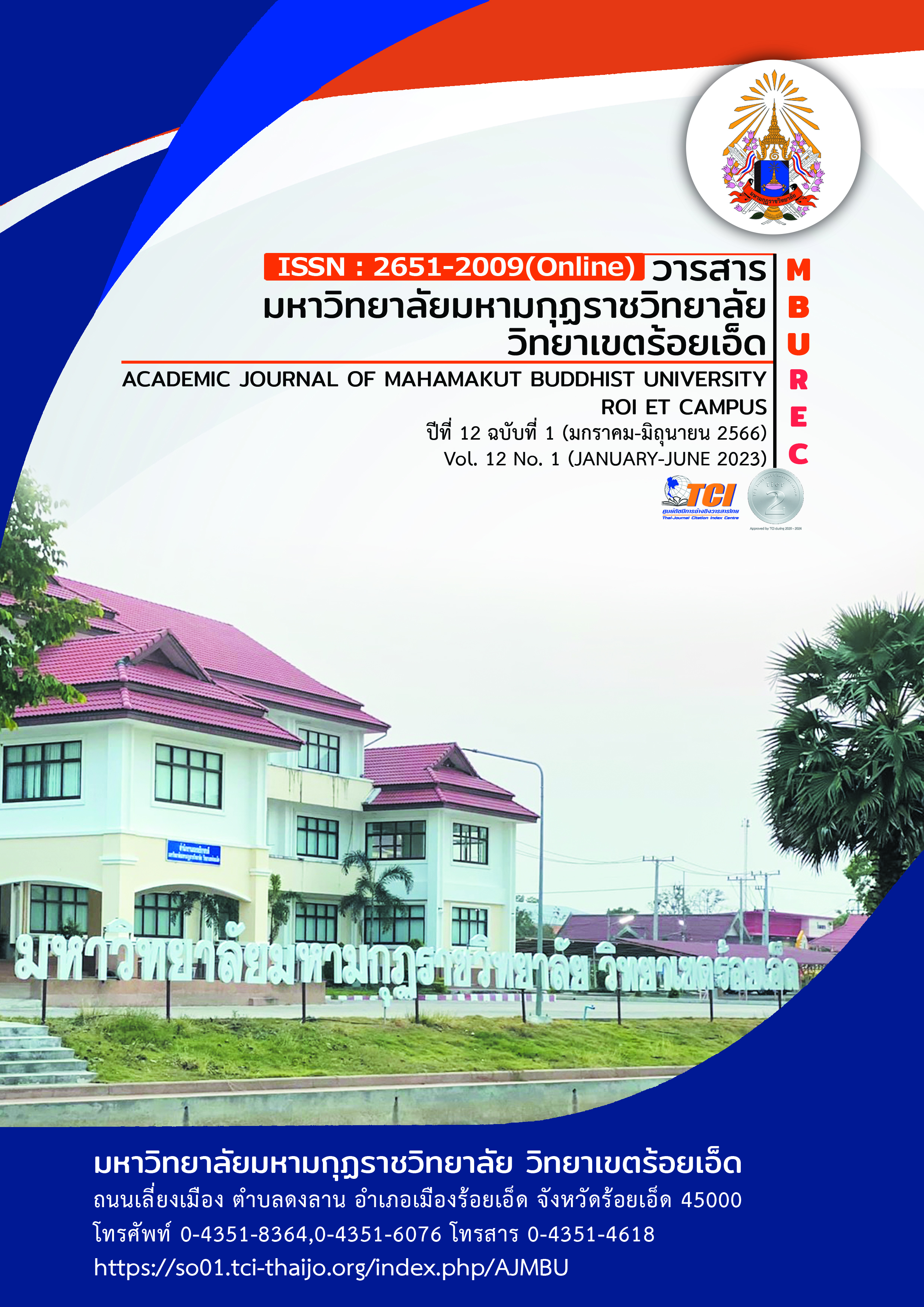AN ANALYSIS STUDY OF THE BELIEF ON THE KING NAGA ACCORDING TO THERAVADA BUDDHIST PHILOSOPHY OF BAN DAN VILLAGERS, SAMYAEK SUB-DISTRICT, LOENGNOTHA DISTRICT, YASOTHON PROVINCE
Main Article Content
Abstract
The objectives of this research article were :1) to study the belief in the King Naga according to Theravada Buddhist philosophy, 2) to study the belief on the King Naga of the Bandan villagers, Samyaek Sub-district, Loengnoktha District, Yasothon Province and 3) to analyze the Belief on the King Naga according to Theravada Buddhist Philosophy of Bandan Villagers, Samyaek Sub-District, Loengnoktha District, Yasothon Province. It was a qualitative research by interview. The sample group consisted of 15 persons. Data analysis was done using descriptive methods.
The results of research found that : 1. The King Naga in Theravada Buddhism, it was found that Buddhism divided the Naga into 1,024 species, divided into 4 families, the Wirupakkha family, Erapaktha family, Chapayaputta family, Kanhakhotoma family. The King Naga can be divided into 2 types according to their place of birth. They can only be born in water. born only on land. 2. The belief on the King Naga of the Ban Dan villagers found that the King Naga is a semi-divine animals and have the power to inspire things to fulfill desire. There is a mix of beliefs between Buddha-Brahmin-Ghost. It is worshiped and has been raised as a master of various ceremonies. This results in the basic ethics of building unity and building solidarity in the community as well. 3. An analysis of the Belief on the King Naga according to Theravada Buddhist Philosophy of Bandan Villagers, Samyaek Sub-District, Loengnoktha District, Yasothon Province, it was found that the Bandan villagers believed in the existence. It was like a god and was raised as a symbol in various rituals in order to lead to the creation of morality for the community and traditional ceremonies have been a way to lead villagers to the path of Dharma practice in Buddhism.
Article Details

This work is licensed under a Creative Commons Attribution-NonCommercial-NoDerivatives 4.0 International License.
References
กิตติพัฒน์ เพชรทอง. (2545). พุทธศาสนากับพญานาคศึกษาวิเคราะห์พญานาคในคัมภีร์พุทธศาสนาเถระวาทกับในวัฒนธรรมอีสาน. วิทยานิพนธ์อักษรศาสตรมหาบัณฑิต. บัณฑิตวิทยาลัย : มหาวิทยาลัยมหิดล.
จิตรกร เอมพันธุ์. (2545). พญานาค เจ้าแห่งแม่น้ำโขง : พิธีกรรมกับระบบความเชื่อพื้นบ้านแห่งวัฒนธรรมอีสาน. วิทยานิพนธ์ปริญญามานุษยวิทยามหาบัณฑิต สาขามานุษยวิทยา. จุฬาลงกรณ์มหาวิทยาลัย.
พระมหาบุญไทย ปุญญมโน. (2549). พญานาคกับพระพุทธศาสนาในพระไตรปิฎก. สืบค้นเมื่อ 10 ตุลาคม 2564. จาก http://www.dhammajak.net/board/viewtopic.php?t=18418
พระสมพร อนาลโย (2550). ความเชื่อเรื่องพญานาคในชุมชนคำชะโนด. วิทยานิพนธ์พุทธศาสตรมหาบัณฑิต. บัณฑิตวิทยาลัย : มหาวิทยาลัยมหาจุฬาลงกรณราชวิทยาลัย.
พีรพล พิสณุพงศ์. (2550). ความเชื่อเรื่องนาคมีมาก่อนพุทธกาล. กรุงเทพมหานคร : แสงศิลป์การพิมพ์.
ยมโดย เพ็งพงศา. (2521). ครุฑและนาคในวรรณคดีสันสฤตและบาลี. วิทยานิพนธ์อักษรศาสตร์มหาบัณฑิต. คณะอักษรศาสตร์ : จุฬาลงกรณ์มหาวิทยาลัย.
วิษณุ ยะโสภา. (2559). ประวัติพญานาค. สืบค้นเมื่อ 25 มีนาคม 2564. จาก http://wwwaaaw wwtttmyyy.blogsPot.com/2017/03/blog-post_94.html
วีเชียร นามการ. (2554). การศึกษาอิทธิพลความเชื่อเรื่องพญานาคที่มีผลต่อสังคมไทยปัจจุบัน.วิทยานิพนธ์พุทธศาสตรมหาบัณฑิต สาขาวิชาพระพุทธศาสนา. บัณฑิตวิทยาลัย : มหาวิทยาลัยมหาจุฬาลงกรณราชวิทยาลัย.
ศิราพร ณ ถลาง. (2548). ทฤษฏีคติชนวิทยา : วิธีวิทยาในการวิเคราะห์ตำนาน-นิทานพื้นบ้าน. กรุงเทพมหานคร : โครงการเผยแพร่ผลงานทางวิชาการ คณะอักษรศาสตร์ จุฬาลงกรณ์มหาวิทยาลัย.


